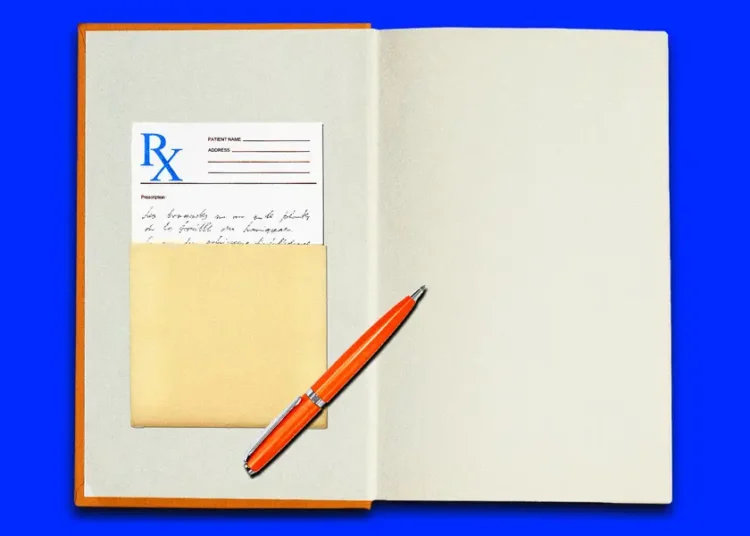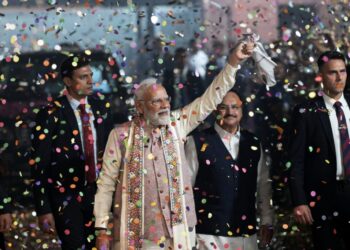Promising a socialist utopia built with the toil of ordinary farmers, Mao Zedong singled out the remote mountain village of Dazhai as proof that faith in the Communist Party and hard work could conquer the harshest terrain.
The villagers, wielding pick axes, hoes and their bare hands more than half a century ago, were said to have carved terraces out of stony hillsides, hauling soil to turn barren slopes into miraculously bountiful fields of corn.
More than 10 million Chinese visited the tiny village in Shanxi Province in northern China, obeying Mao’s order to “learn from Dazhai” and soak up its history of hardship and anticapitalist fervor. Most came during China’s disastrous 1966-76 Cultural Revolution, during which Dazhai’s semiliterate party boss, Chen Yonggui, was elevated to the Politburo in Beijing.
Today, the farmers of Dazhai have mostly vanished. Many of their terraces have crumbled, while machines and corporate farming have replaced their labor on those that remain.
Villagers now mainly work to serve the one thing that hasn’t changed: Dazhai’s role as a place of pilgrimage and symbol of what the Communist Party would like China to be, though what exactly that is keeps changing.
Visitors today are mostly older people with fond memories of their youth in the ’60s and ’70s, but they also include younger Chinese bused in on party-organized tours. The place is a must-see stop on China’s sprawling “red tourism” trail of party heritage sites, combining mass tourism frippery with what Xi Jinping, China’s leader and a big fan of party history, calls “moral nourishment.”
Primitive cave homes in the middle of what used to be Dazhai’s “people’s commune,” the village’s only employer, have been turned into a boutique hotel, which opened last year backed by investment from a coal company.
On Tiger Head Mountain, the focus of what were once trumpeted as superhuman feats led by the party chief — hauling soil to make rocky ground fit for planting — terraced fields have mostly been abandoned because they were too small and unstable for heavy farm machinery. (Parts of the story turned out to be fake; much of the real work was done by the army, not locals, and with the help of machines.)
The mountain has become a tourist attraction that charges for admission. It has a Buddhist temple, but its main draw is the grave of a dedicated atheist, Chen, the former party boss.
A group of young women, party members at a state-run energy company who were on a recent “study tour” of Dazhai, giggled nervously when asked what a discredited Mao-era model village had to do with today’s China.
One woman eventually answered, “The spirit of self-reliance,” using the Chinese phrase “zili gengsheng,” a Maoist slogan plastered in red paint on walls around the village.
Self-reliance — the literal translation is “regeneration through one’s own efforts” — is a slogan for all seasons. It was first declared the party’s guiding principle by Mao in 1945, four years before he seized power in Beijing. He deemed it an invincible weapon to “defeat all Chinese and foreign reactionaries.”
Mr. Xi doesn’t talk about reactionaries. But he has made “self-reliance” a cornerstone of the party’s efforts to meld its revolutionary past with its current pursuit of “national rejuvenation” through economic growth.
This is a sharp shift in emphasis. For decades after Deng Xiaoping opened up the Chinese economy to the world in the late 1970s, the idea of self-reliance was played down, though it still popped up in formulaic declarations of loyalty to Mao.
It became “associated in China with North Korea, a byword for grim backwardness and deprivation,” said Richard McGregor, the author of “The Party,” a book on China’s political system, and a senior fellow for East Asia at the Lowy Institute, an Australian research center. “It was a totally negative concept.”
“Nowadays, under Xi, a policy of self-reliance is tied to visions of high-tech independence, security and advancement, a kind of digital nirvana with Chinese characteristics,” Mr. McGregor said.
That policy, though far from the economic autarky promoted by Mao or North Korea, still sees the outside world as a threat. But it is now focused on investing, to make sure China is never dependent on — and therefore vulnerable to — the West, particularly for critical technologies like semiconductors and computer operating systems.
The new meaning of self-reliance has allowed Dazhai to reinvent itself, changing from a beacon of rural anticapitalist fervor into a hive of capitalist commerce. Former farmers run shops selling Mao trinkets, locally distilled grain liquor and enamel mugs celebrating the “Dazhai spirit.” For visitors with serious cases of nostalgia, some restaurants offer noodles garnished with tree bark, a throwback to China’s days of hunger.
Jia Tianlian, 74, who worked the fields during Chen’s rule, said villagers did not see much of their chief after he moved to Beijing and became enmeshed in the Cultural Revolution, a decade of political turmoil. But he remembers him as a “good man” who saved Dazhai from the worst of the period’s violence, and from ruin during catastrophic flooding in 1963.
Mr. Jia still grows lettuce and leeks on tiny patches of soil outside his home, but he long ago gave up the more substantial plots he was given after the village’s collective farm disbanded in the early 1980s. He sold them to a local farming enterprise that now controls most of the village land.
His two sons left Dazhai to find work elsewhere — one as a driver, the other at a coal mine — because “no young people want to work in the fields anymore.” The single-room home he shares with his wife has posters featuring Mao and Mr. Xi, but they are dwarfed in size by a tribute to the God of Wealth.
Dazhai’s past role as a symbol of opposition to individual enterprise and wealth inequality has been carefully scrubbed from the official “red tourism” narrative, which is aimed at solidifying loyalty to the party by trumpeting a sanitized history of sacrifice in pursuit of unwavering goals.
Some have failed to keep up with the script.
Li Yanliang, a former farmer, got a job, thanks to Chen, in the leadership compound in Beijing and later returned home to open a small restaurant in Dazhai. It has a curtained-off dining area decorated with old photographs and propaganda posters featuring Jiang Qing, Mao’s fourth and last wife.
Mr. Li said he was not showing support for Jiang, who was arrested after Mao’s death and has been largely written out of party history, except as a kind of evil witch. He said he just wanted to record the fact that she visited Dazhai twice and always supported the village.
Reminded that official history reviles her as a murderous, leftist fanatic, he answered: “The past is the past.”
Chen, the former party boss, was also a fanatic — he saw eye to eye with Pol Pot, Cambodia’s genocidal Khmer Rouge leader, who visited Dazhai in 1977 — but is revered by “red tourists” for his devotion to the party.
His framed black-and-white photograph sits atop a table at the entrance to his former home, next to a bust of Mao. Before each is a pile of cigarettes left as offerings by reverential visitors. (Chen died of lung cancer.)
The devotion leaves some visitors cold. Li Wen, a 51-year-old businessman from Xi’an, said he had only come to Dazhai because three elderly relatives wanted to make the trip. “I don’t really care about any of this stuff,” he said, adding: “None of it exists anymore, but people who remember it are nostalgic.”
Huang Xiaoming, one of a group of party members visiting from Taiyuan, the capital of Shanxi, insisted there was more at work than nostalgia. He pointed to “self-reliance” as the key to China’s extraordinary economic growth since Mao’s death.
He led his fellow travelers in a group photo shoot, with a big Communist Party flag, in a courtyard where large red characters on a wall screamed a quote from Mr. Xi: “Happiness only comes from struggle.”
Many older Chinese fear that this message has been lost on younger generations. “They never had to experience hardship,” grumbled Yuan Guoqiang, 65, who was visiting with his wife.
“We still need the Dazhai spirit,” he said.
At the center of the village stands a weeping willow once known as “the tree of suffering,” where, visitors were told, landlords used to whip disobedient laborers, sometimes so fiercely that they died. After the Communist Party seized power and executed landlords, the story went, it became “the happy man tree.”
To keep it from falling over, the aged tree is now propped up by a concrete post, shaped to look like a tree trunk. But this local landmark, a reminder of the brutality that Chinese people inflicted on each other before and after the 1949 revolution, is no longer an official stop on guided tours of Dazhai.
Andrew Higgins is the East and Central Europe bureau chief for The Times based in Warsaw, on temporary assignment in Shanghai.
The post Where Mao’s Peasants Tilled the Soil, Tourists Now Pay for the View appeared first on New York Times.




